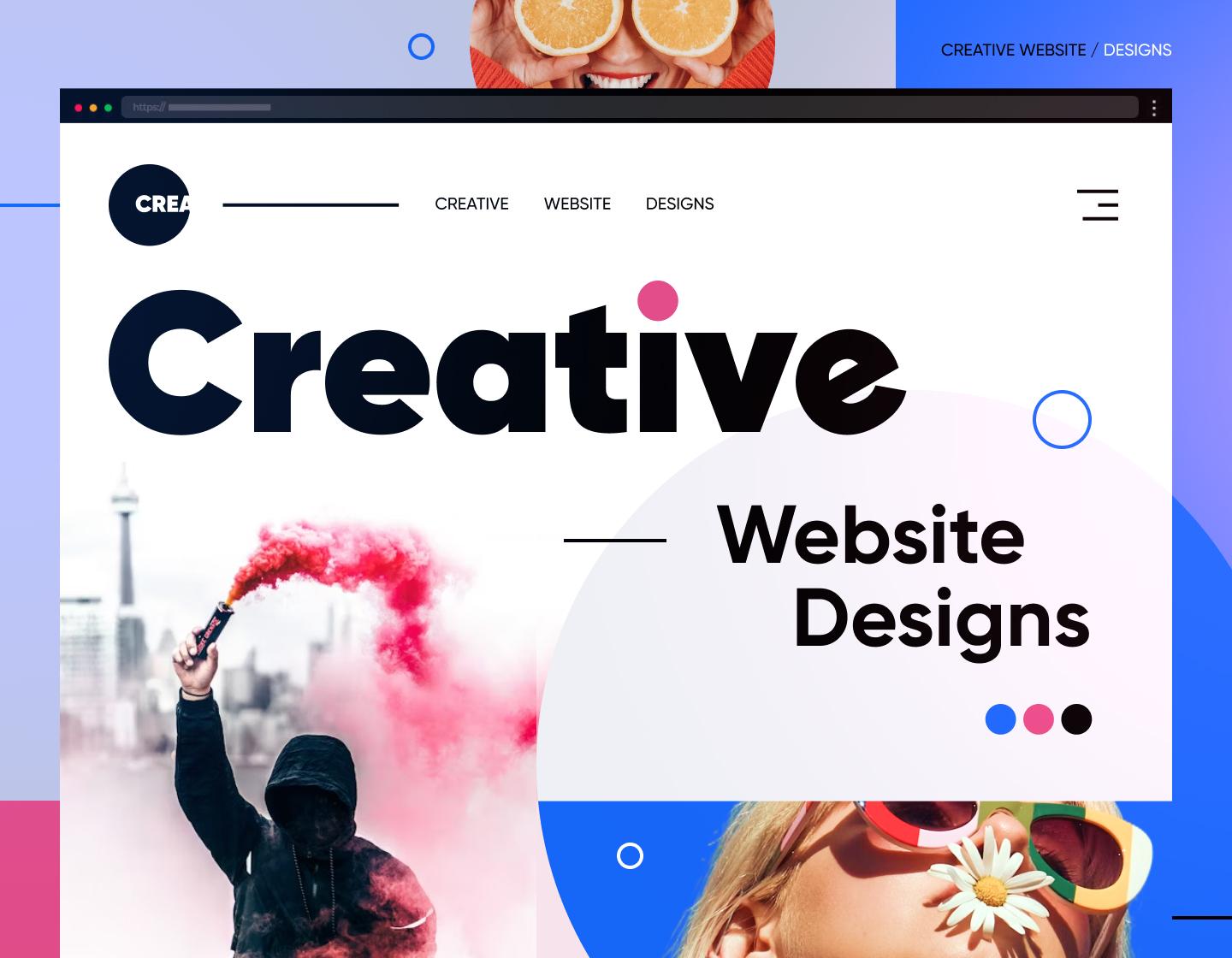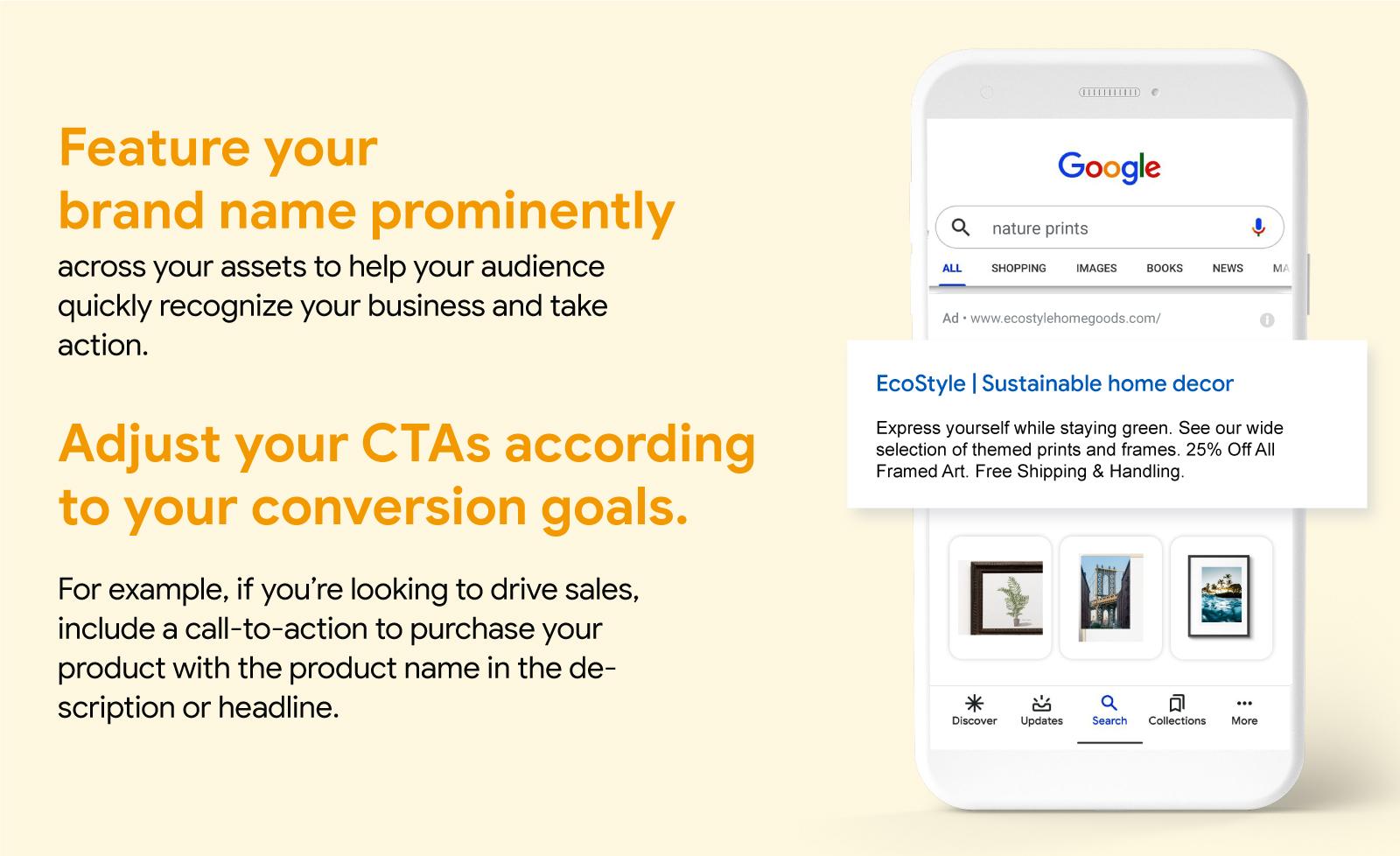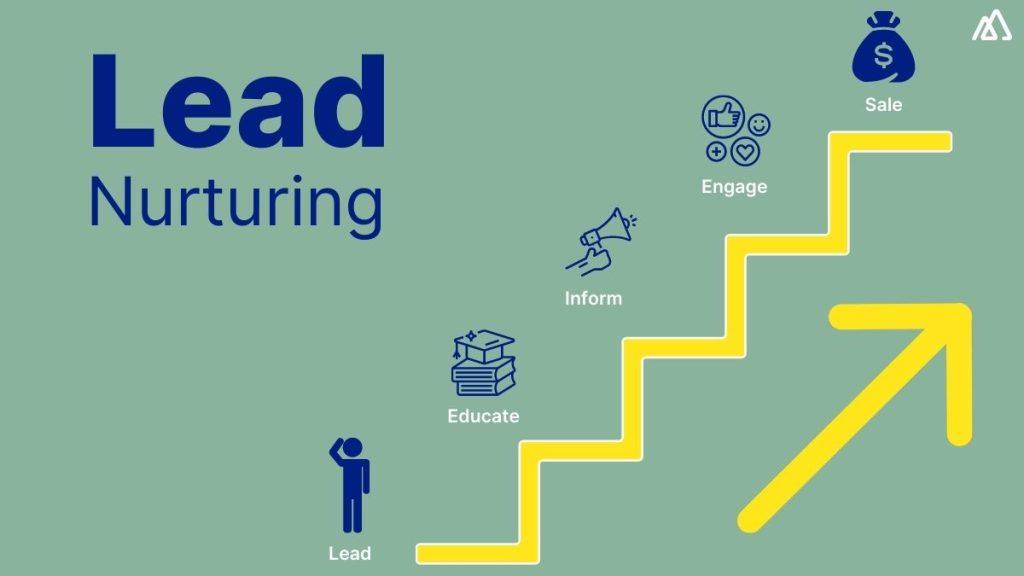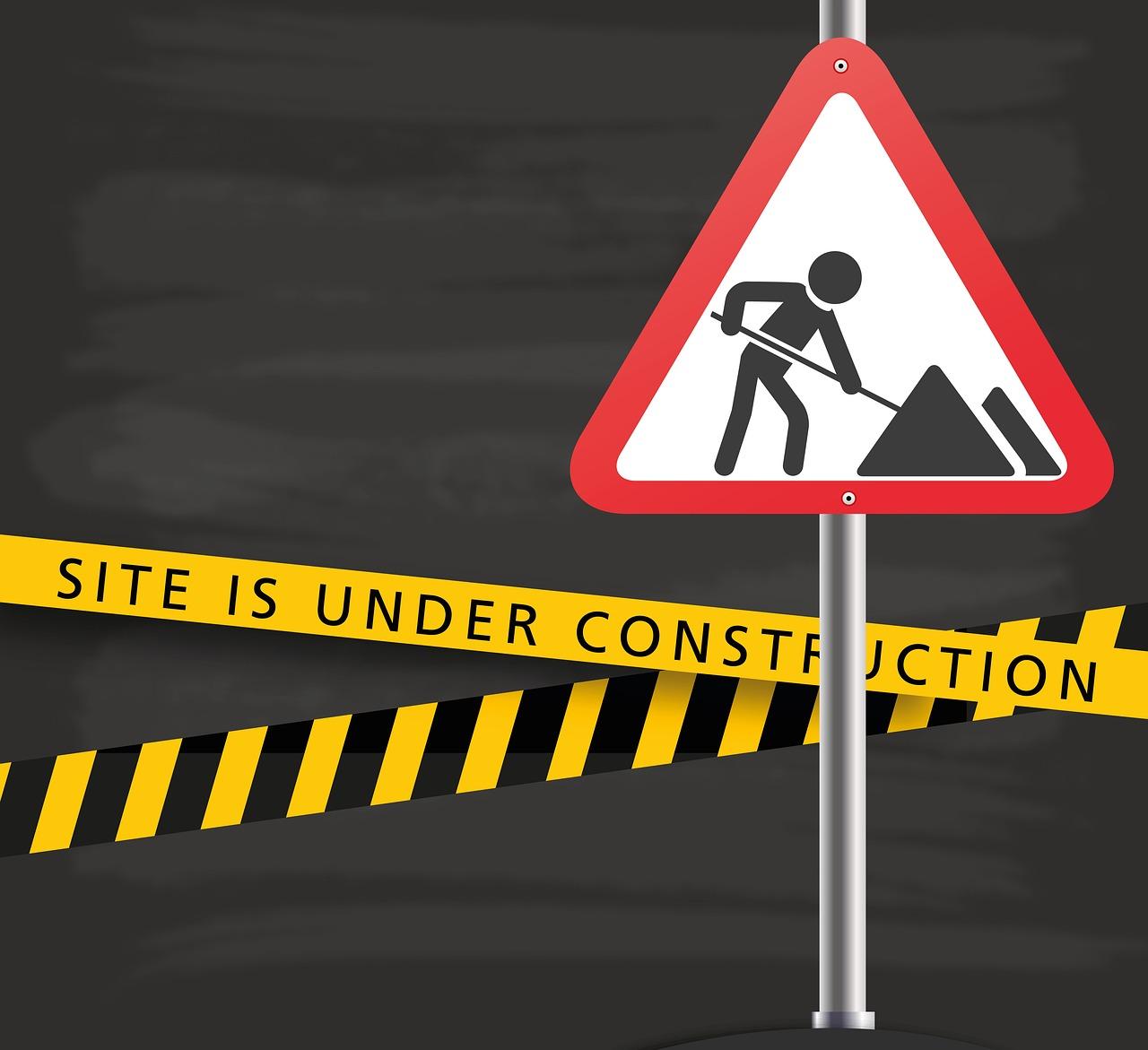Are you a construction professional looking to elevate your online presence and attract more clients? In today’s digital age, having a website is not just a luxury—it’s a necessity. But it’s not enough to simply have an online space; you need to create a platform that builds trust and generates leads. Imagine your website as a virtual handshake, welcoming potential clients and proving that you’re the right choice for their construction needs. In this article, we’ll explore effective strategies to enhance the credibility of your construction website, turning visitors into loyal customers. Whether you’re a seasoned contractor or just starting out, these tips will help you lay a solid foundation for success. Let’s dive in and discover how to transform your website into a powerful tool that not only showcases your expertise but also builds lasting relationships with clients.
Building a Strong Foundation with Your Website Design
When designing your construction website, the goal is to create a user-friendly experience that builds trust and showcases your expertise. A well-structured layout is essential, as it allows visitors to navigate easily and find the information they need. Consider using a clean design with intuitive menus, so potential clients can effortlessly explore your services and past projects.
Incorporating high-quality visuals is another critical aspect of website design. Use stunning images and videos of your completed projects to create a strong visual impact. This not only highlights your work but also sets the tone for professionalism and quality. Pair visuals with compelling descriptions that tell the story behind each project, allowing visitors to connect emotionally with your brand.
To enhance credibility, include testimonials and case studies from satisfied clients. This social proof can significantly influence a visitor’s perception of your business. Display these prominently on your homepage or create a dedicated section for reviews. Consider using a format like this:
| Client Name | Project Type | Testimonial |
|---|---|---|
| John Doe | Residential | “They transformed our home beautifully!” |
| Jane Smith | Commercial | “Professional, timely, and exceeded expectations.” |
In addition to showcasing your work, ensure your website features clear calls to action (CTAs). Whether it’s a request for a quote, a newsletter sign-up, or a consultation, strategic placement of CTAs guides visitors on their journey through your site. Use contrasting colors and persuasive language to make your CTAs stand out, prompting visitors to take the next step toward engaging with your business.
ensure that your website is optimized for mobile devices. With an increasing number of users browsing on their smartphones, a responsive design is crucial. A mobile-friendly site not only improves user experience but also boosts your search engine ranking, making it easier for potential clients to find you online. By focusing on these elements, you’re not just creating a website; you’re building a solid foundation for trust and leads that will support your construction business for years to come.

Crafting Compelling Content that Speaks to Your Audience
When it comes to engaging your audience, understanding their needs and preferences is pivotal. Your construction website should serve as a bridge between your services and potential clients. Craft content that resonates with them by focusing on these essential elements:
- Know Your Audience: Conduct thorough research to identify the demographics and interests of your target market. Are they first-time homebuyers, property investors, or large developers? Tailor your messaging accordingly.
- Utilize Storytelling: Share success stories and case studies that showcase your expertise. Narratives about previous projects can humanize your brand and create emotional connections.
- Provide Value: Offer insightful articles, tips, or how-to guides that address common challenges faced by your audience. This positions your company as a knowledgeable resource and builds trust.
- Be Authentic: Genuine content reflects your company’s personality and values. Avoid jargon and speak to your audience in a relatable and straightforward manner.
Additionally, visuals play a crucial role in creating compelling content. High-quality images of your completed projects can enhance your narrative and provide visual evidence of your capabilities. Consider incorporating:
- Before-and-After Galleries: Showcase transformations that highlight your skills and craftsmanship.
- Video Testimonials: Let satisfied clients share their experiences working with you. This adds a personal touch and builds credibility.
Remember, the goal is to foster trust and convert visitors into leads. Make it easy for potential clients to contact you by including clear calls-to-action (CTAs) throughout your content. Here’s a simple structure for your CTAs:
| CTA Type | Description |
|---|---|
| Contact Form | Encourage visitors to request quotes or consultations. |
| Newsletter Signup | Keep potential clients informed about industry trends and promotions. |
| Downloadable Resources | Offer free eBooks or checklists in exchange for contact details. |
Ultimately, your construction website should be more than just a digital brochure—it should actively engage, inform, and inspire action. By crafting content that speaks directly to your audience’s needs and preferences, you’ll not only build trust but also foster lasting relationships that lead to successful projects.
Showcasing Your Work with Engaging Visuals
When it comes to construction, potential clients often rely on visuals to evaluate the quality and reliability of your work. Engaging visuals can capture the essence of your projects, showcasing your craftsmanship and attention to detail. To truly stand out, consider the following strategies:
- High-Quality Photography: Invest in professional photography to highlight your completed projects. A well-composed image can speak volumes about your work ethic and standards.
- Before-and-After Shots: Showcasing transformations can be incredibly persuasive. Potential clients love to see the impact of your work, and these comparisons can increase their confidence in your abilities.
- Video Tours: Create short video tours of your completed projects. These can add a personal touch, allowing viewers to see the intricacies of your work and the thought behind your designs.
- Infographics: Use infographics to present complex data in a visually appealing way. Displaying timelines, costs, and project milestones can help clients grasp your process and experience at a glance.
Incorporating these visuals not only enhances the aesthetic appeal of your website but also builds trust. Clients feel more assured when they see real examples of your work. Additionally, you can highlight customer testimonials alongside project images to further reinforce your credibility.
| Visual Type | Benefits | Best Use Cases |
|---|---|---|
| Photography | Showcases quality and detail | Completed Projects |
| Video Tours | Adds a personal touch | Client Proposals |
| Before-and-After | Demonstrates transformation | Renovation Projects |
| Infographics | Simplifies complex information | Project Timelines |
As you curate your visuals, remember to keep them updated and relevant. Regularly featuring new projects will not only keep your website fresh but will also reflect your ongoing commitment to quality. By utilizing these engaging visuals effectively, you’ll be well on your way to building trust and attracting leads through your construction website.
Leveraging Customer Testimonials for Authenticity
In today’s digital landscape, potential clients are savvy and often seek reassurance from existing customers before making a decision. This is where customer testimonials come into play, serving as a powerful tool to enhance your construction website’s credibility. When visitors see real feedback from satisfied clients, it fosters a sense of trust and authenticity that can significantly influence their purchasing decisions.
Integrating testimonials into your website isn’t just about showcasing praise; it’s about building a narrative that resonates with your audience. Consider featuring testimonials in prominent locations, such as:
- On the homepage, above the fold, to grab immediate attention.
- Within project pages to reinforce the quality of your work.
- In a dedicated testimonials page, easily accessible for visitors seeking social proof.
When presenting testimonials, authenticity is key. Use real names, images, and project details to strengthen the connection. A well-crafted testimonial can be a compelling story where clients describe their challenges, how you addressed them, and the positive outcomes they experienced. This storytelling approach makes the testimonial relatable and highlights your company’s capability to deliver results.
To further enhance the impact of testimonials, consider creating a simple table that showcases various client experiences, like this:
| Client Name | Project Type | Testimonial |
|---|---|---|
| Sarah Johnson | Residential Renovation | “The team transformed our home beyond our expectations!” |
| Mark Lee | Commercial Build | “Professionalism and quality workmanship at every step.” |
| Linda Smith | Custom Deck | “Exceptional service and a stunning result that we love.” |
Another effective strategy is to include video testimonials. A few minutes of your clients sharing their experiences can make a world of difference. Video content is engaging and allows potential clients to see the genuine satisfaction of your previous customers. It adds a personal touch that written testimonials simply can’t replicate.
don’t forget to encourage feedback regularly. After project completion, reach out for testimonials and consider offering a small incentive for their time. This approach not only builds your repository of authentic testimonials but also shows clients that their opinions matter. The more authentic voices you feature, the more trust you will cultivate, driving leads and conversions.

Implementing Clear Calls to Action that Convert
When it comes to driving conversions on your construction website, clear calls to action (CTAs) are essential. They serve as the guiding light for your visitors, steering them toward the next steps you want them to take. A well-crafted CTA not only grabs attention but also resonates with your audience’s needs and desires. To effectively implement CTAs that convert, consider the following strategies:
- Be Direct: Use straightforward language that tells visitors exactly what to do. Phrases like “Request a Quote,” “Schedule a Consultation,” or “Get Your Free Estimate” eliminate ambiguity and make it easy for users to understand the action you want them to take.
- Create Urgency: Incorporate elements that create a sense of urgency. Words like “Limited Time Offer” or “Act Now” can motivate potential clients to take immediate action rather than putting off their decision.
- Focus on Benefits: Highlight what visitors will gain by following your CTA. Instead of merely saying “Contact Us,” try “Contact Us for Custom Solutions Tailored to Your Needs.” This approach emphasizes the value you’re offering.
Additionally, the placement of your CTAs plays a crucial role in their effectiveness. Ensure they are easily visible and strategically positioned throughout your website. Consider the following best practices:
- Above the Fold: Place a primary CTA at the top of your homepage so visitors see it without needing to scroll.
- After Key Content: Follow important sections of your site, like service descriptions or project galleries, with a relevant CTA that encourages visitors to reach out.
- In Pop-Ups: Use pop-ups sparingly to capture attention, but make sure they provide real value, such as offering a downloadable guide or special promotion.
It’s also essential to test different formats and styles for your CTAs to see which ones resonate best with your audience. Experiment with colors, sizes, and wording to find the perfect combination that not only captures attention but also encourages action. For example, you might set up A/B tests to compare a button that says “Get a Free Quote” versus one that says “Start Your Project Today.” Monitor engagement and conversion rates to determine what works best.
| CTA Elements | Examples |
|---|---|
| Action-Oriented Verbs | Build, Discover, Transform |
| Urgency Indicators | Now, Today, Limited |
| Value Proposition | Custom Solutions, Free Consultations, Expert Advice |
By prioritizing clarity, urgency, and value in your calls to action, you can create a compelling user experience that not only enhances trust but also significantly boosts lead generation. Remember, the goal is to simplify the decision-making process for your visitors, making it as easy as possible for them to engage with your services. The right CTAs can turn casual browsers into loyal customers, driving the growth your construction business deserves.
Optimizing for Search Engines to Attract More Visitors
To truly attract more visitors to your construction website, it’s essential to implement effective search engine optimization (SEO) strategies. This will not only enhance your site’s visibility but also build credibility with your audience. Start by conducting thorough keyword research to identify terms and phrases that potential clients are searching for. Utilize tools like Google Keyword Planner or SEMrush to find relevant keywords with a good balance of competition and search volume.
Once you have your keywords, integrate them naturally into your website’s content. This includes your headlines, subheadings, and throughout the body copy. However, avoid keyword stuffing, as it can lead to penalties from search engines. Instead, focus on creating high-quality content that provides real value to your readers. This could be in the form of blog posts, guides, or case studies showcasing your past projects.
Another crucial aspect of SEO is optimizing your website’s performance. Ensure your site loads quickly and is mobile-friendly, as these factors significantly influence user experience and search rankings. Utilize tools like Google PageSpeed Insights to assess your site’s performance and identify areas for improvement. Additionally, consider the following best practices:
- Create descriptive meta tags: Craft compelling meta titles and descriptions that include your target keywords.
- Use alt text for images: This not only helps with SEO but also improves accessibility.
- Implement internal linking: Link to other relevant pages and blog posts within your site to keep visitors engaged.
Don’t underestimate the power of local SEO, especially for construction businesses. Claim your Google My Business listing and ensure your business information is accurate across all platforms. Encourage satisfied clients to leave positive reviews, as these can significantly impact your local search ranking and help build trust with new visitors.
Lastly, consider utilizing structured data markup to enhance your search engine results. By providing search engines with additional context about your content, you can improve your visibility and encourage higher click-through rates. Implementing these tactics will not only attract more visitors but will also help convert them into leads and long-term clients.

Utilizing Social Proof to Enhance Credibility
In today’s digital landscape, potential clients are more discerning than ever. They seek reassurance before making decisions, especially when investing in significant projects like construction. By leveraging social proof, your construction website can transform skepticism into trust, thereby enhancing your credibility.
Social proof comes in various forms, each playing a vital role in shaping perceptions. Consider incorporating the following elements:
- Testimonials: Share authentic reviews from satisfied clients. Use specific details about the project to add authenticity.
- Case Studies: Present comprehensive case studies that highlight your successful projects, showcasing challenges overcome and the value delivered.
- Before and After Photos: Visual evidence of your work can be incredibly persuasive. High-quality images demonstrate your expertise and attention to detail.
- Ratings and Awards: Display any industry awards, recognitions, or accreditations prominently on your site to validate your authority.
Another effective way to utilize social proof is through user-generated content. Encourage clients to share their experiences on social media and integrate these posts into your website. This not only showcases your work but also fosters a sense of community and engagement around your brand.
To further illustrate the impact of social proof, consider the following table that highlights the effectiveness of various forms:
| Type of Social Proof | Impact on Trust | Conversion Rate Increase |
|---|---|---|
| Client Testimonials | High | 20% |
| Case Studies | Very High | 30% |
| Before and After Photos | High | 25% |
| Ratings and Awards | Moderate | 15% |
By incorporating these elements effectively, your construction website can create a powerful narrative of reliability and excellence. Remember, the more genuine and relatable your social proof is, the more likely potential clients will feel confident in choosing your services.

Creating a Seamless User Experience for Enhanced Engagement
In today’s digital landscape, a construction website must prioritize user experience to foster trust and encourage engagement. When visitors land on your site, they should feel an immediate connection to your brand, which can be achieved through thoughtful design and intuitive navigation. Here are key elements to consider:
- Responsive Design: Ensure your website looks great on all devices, from desktops to smartphones. A responsive layout enhances accessibility and keeps users engaged, regardless of their preferred browsing method.
- Fast Loading Times: Optimize your website’s speed. Users are likely to abandon sites that load slowly, so compress images and streamline code to keep visitors on your page longer.
- Clear Navigation: Create a simple and logical menu structure. A user should find what they are looking for within a few clicks. Use descriptive headings and subheadings to guide them easily.
Incorporating visual elements can significantly enhance the user experience. High-quality images of completed projects, engaging videos, and interactive content can captivate your audience and showcase your expertise in construction. Consider adding:
- Project Galleries: Showcase your best work with easy-to-navigate galleries that allow users to explore various projects.
- Client Testimonials: Display positive feedback prominently to build credibility. Authentic reviews can sway potential clients and encourage them to trust your services.
- Blog Section: Regularly updated blogs not only improve SEO but also position you as an industry leader. Share tips, trends, and insights to keep your audience informed and engaged.
It’s also essential to integrate clear calls-to-action (CTAs) throughout your website. These prompts guide users toward desired actions, such as requesting a quote, signing up for a newsletter, or contacting your team. Effective CTAs should be:
- Visible: Place them strategically on your homepage and throughout your content.
- Pertinent: Tailor CTAs to match the content and context of the page for maximum relevance.
- Action-Oriented: Use compelling language that encourages users to take the next step.
| Feature | Importance | Actionable Tip |
|---|---|---|
| Responsive Design | Improves accessibility | Test on multiple devices |
| Fast Loading Times | Reduces bounce rate | Utilize image compression tools |
| Clear Navigation | Enhances user experience | Conduct user testing for feedback |
By focusing on these aspects, your construction website can create a seamless user experience that not only enhances engagement but also builds trust, ultimately leading to more leads. Remember, a satisfied visitor is more likely to become a loyal client.

Nurturing Leads Through Strategic Follow-Up Techniques
In the competitive landscape of the construction industry, effective follow-up strategies can transform initial inquiries into long-lasting client relationships. When a potential lead reaches out, it presents an opportunity to showcase your expertise and commitment. Here are some strategic follow-up techniques to consider:
- Personalized Communication: Tailor your messages to address the specific needs and interests of each lead. Use their name, mention details from your previous conversation, and share relevant resources that can assist them.
- Timely Responses: Aim to follow up within 24 hours of initial contact. A quick response shows that you value their inquiry and are eager to assist. Delayed communication may lead to lost opportunities.
- Value-Added Content: Provide leads with insightful content such as blog posts, case studies, or infographics that demonstrate your industry knowledge and reinforce your value proposition.
- Regular Check-Ins: Implement a system for periodic follow-ups. This could be weekly or monthly depending on the lead’s stage in the buying process. Keep the tone friendly and informative, rather than overly sales-focused.
In addition to these techniques, utilizing technology can enhance your follow-up process. Consider employing a Customer Relationship Management (CRM) system to track interactions and set reminders for future contact. This systematic approach ensures no lead falls through the cracks and helps maintain a consistent communication flow.
Another effective strategy is to leverage social proof. Share testimonials or success stories from previous clients during your follow-ups. This builds credibility and trust, reassuring potential clients of the high-quality service they can expect from your company. You might present this information in a succinct table:
| Client | Project Type | Feedback |
|---|---|---|
| ABC Construction | Residential | “The team was professional and exceeded our expectations!” |
| XYZ Builders | Commercial | “Timely delivery and exceptional quality work.” |
Ultimately, the goal of your follow-up efforts is to create a dialogue that fosters trust and encourages potential clients to choose your services. By combining personal touches with strategic techniques, you can effectively nurture leads, guiding them closer to making a decision in your favor.

Keeping Your Content Fresh to Maintain Trust and Interest
To keep your audience engaged with your construction website, it’s essential to consistently provide fresh and relevant content. This not only helps to maintain trust but also fosters interest in your services. When visitors see updated information, project highlights, and useful resources, they’re more likely to return and share your website with others.
Consider integrating a blog where you can share:
- Project updates: Document your ongoing projects with before-and-after photos and progress reports.
- Industry trends: Discuss the latest advancements in construction technology, sustainable practices, or design trends.
- Client success stories: Showcase testimonials and case studies highlighting satisfied customers and completed projects.
Another effective strategy is to utilize social media platforms to share snippets of your content. This approach not only increases visibility but also encourages interaction. Engaging your audience with questions or polls related to your services can lead to valuable feedback and insights.
To further enhance your site’s appeal, consider creating a content calendar. This tool helps you plan and schedule posts, ensuring that your content remains diverse and timely. Here’s a simple example:
| Month | Content Theme | Post Type |
|---|---|---|
| January | Sustainable Building | Blog Post |
| February | Client Testimonials | Video |
| March | Home Renovation Tips | Infographic |
don’t underestimate the power of visual content. High-quality images and videos not only enhance the aesthetic appeal of your website but also keep visitors engaged. Consider creating video walkthroughs of completed projects or virtual tours of upcoming developments. By investing in fresh and engaging content, you can build strong relationships with your audience, ultimately leading to increased trust and leads.
Frequently Asked Questions (FAQ)
Q&A: How to Build Trust and Leads With Your Construction Website
Q: Why is trust important for my construction website?
A: Trust is the foundation of any successful business, especially in the construction industry. Clients want to feel confident that you’ll deliver quality work on time and within budget. A trustworthy website showcases your professionalism, reliability, and commitment to excellence. When potential clients see a polished, informative site, they’re far more likely to reach out and schedule that vital consultation.
Q: What elements should I include on my website to build trust?
A: Great question! Start with a clean, professional design that reflects your brand. Include easy-to-find contact information, client testimonials, and case studies showcasing your past projects. High-quality images of your work, certifications, and affiliations with reputable organizations can also bolster your credibility. Remember, transparency is key—consider adding a blog where you share insights, tips, and industry news to position yourself as an authority.
Q: How can I effectively capture leads through my website?
A: Capturing leads is all about making it easy for potential clients to engage with you. Use clear calls to action (CTAs) on every page, inviting visitors to request a quote or schedule a consultation. Offer valuable resources like downloadable guides or checklists in exchange for their contact information. Consider using chatbots for immediate engagement; they can answer questions and capture leads even while you sleep!
Q: Should I invest in SEO for my construction website? Why?
A: Absolutely! SEO (Search Engine Optimization) is crucial if you want your website to be found by potential clients. By optimizing your site for relevant keywords and phrases, you increase your chances of appearing in search results when someone looks for construction services in your area. Higher visibility means more traffic, which can lead to more inquiries and ultimately, more projects.
Q: How do I know if my website is effectively building trust and generating leads?
A: You’ll want to look at several key metrics: track your website traffic, conversion rates, and user engagement. Tools like Google Analytics can show you how many visitors are coming to your site and what actions they’re taking. Pay attention to feedback—are visitors reaching out to you? If not, consider tweaking your content or design. Regularly reviewing these metrics will help you fine-tune your approach and ensure your site is working for you.
Q: What if I don’t have the time or expertise to improve my website?
A: Don’t worry! Hiring a professional web designer or marketing agency can be a worthwhile investment. They can help you create a site that not only looks great but is also optimized for lead generation and trust-building. Remember, your website is often the first impression potential clients have of your business—make sure it’s a good one!
Q: what’s the most important takeaway for building trust and leads with my construction website?
A: Be genuine and consistent! Building trust takes time, but with a well-crafted website that reflects your values and expertise, you’ll not only attract leads but also turn them into loyal customers. Keep updating your content, engaging with your audience, and showcasing your best work, and you’ll create a strong online presence that drives your business forward.
Conclusion: Your construction website is more than just a digital business card; it’s a powerful tool for building trust and capturing leads. By focusing on quality design, valuable content, and user engagement, you can turn your site into a magnet for potential clients. Now’s the time to take action and watch your business grow!
Key Takeaways
building trust and generating leads through your construction website isn’t just about flashy designs and catchy slogans. It’s about creating a genuine connection with your audience by showcasing your expertise, reliability, and commitment to quality. By implementing the strategies we’ve discussed—such as optimizing for user experience, displaying customer testimonials, and providing valuable content—you can transform your website into a powerful tool that not only attracts potential clients but also cultivates lasting relationships.
Remember, in the construction industry, trust is everything. When prospective clients visit your website, they should feel confident that they’re in capable hands. So take the steps today to enhance your online presence—after all, a trustworthy website can set you apart from the competition and pave the way for exciting new opportunities.
Now, go ahead and put these tips into action! Your future clients are just a click away. If you have any questions or need further guidance, don’t hesitate to reach out. Your success story is just beginning, and we can’t wait to see you build that trust and those leads!

